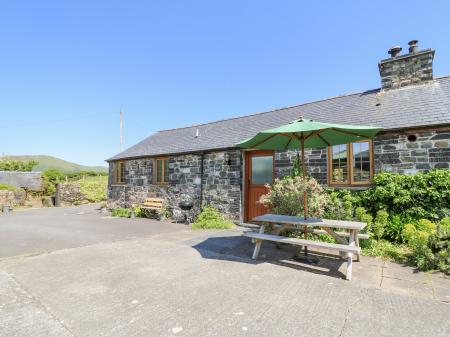
History
The Talyllyn Railway was opened in 1866 to carry slate from quarries at Bryn Eglwys, near Abergynolwyn, to the coast at Tywyn. The railway gauge is an unusual 2'3" span, used by only 3 other railways in Britain.
Service launched in October 1866, with an unexpected addition; a passenger coach was added to the line, despite the fact that the railway had not received permission from the Board of Trade to carry passengers.
Passengers had to be carried at their own risk, and may even have been granted free passage until an Act of Parliament gave permission for a formal passenger service. That makes the Talyllyn line the first narrow gauge railway in Britain to carry passengers.
A pair of steam engines were used from the start, unlike the nearby Corris railway which started as a horse-powered tramway. The railway relied more heavily on passenger traffic after demand for slate declined in the early 20th century. The line was forgotten when the British rail system was nationalised in 1947. It finally ceased operation in 1950.
The railway was rescued by the Talyllyn Railway Preservation Society (TRPS) and reopened as a tourist attraction in 1951. The original steam locomotives still pull original passenger carriages, now joined by more modern rolling stock as well. There are now 6 steam locomotives, used for hauling passenger trains, plus 5 diesel locomotives for shunting work.
The main terminus is at Tywyn Wharf, with 5 minor halts on the 7.25 mile trip to Nant Gwernol. The line is single-track, so passing loops had to be added at key locations so passenger rains could pass in opposite direction! One of the stops is very close to Dolgoch Falls, a popular walk to a series of waterfalls, and near Nant Gwernol there are wonderful forest walks.

viaduct at Dolgoch
You can get an all-day, hop-on, hop-off ticket so you can enjoy the countryside walks, or simply go out and return on the same journey. A return trip - without getting off to enjoy the local scenery - takes roughly 2.5 hours.
Thomas the Tank Engine
The Talyllyn line features in the children's series of Thomas the Tank Engine books by Rev. Wilbert Awdry. Thomas and most of his friends were modelled after real locomotives on the Talyllyn line. Rev. Awdry visited Talyllyn on a family holiday as it was being restored, and was so fascinated by the railway that he became a volunteer, and based his stories around the people, the engines, real-life experiences helping the restoration efforts, and the scenic location.
The on-site museum has an exhibit on Rev. Awdry and his link to the Talyllyn Railway. This might be a major attraction if you have small children along, especially if your children, like ours, are fascinated by the stories of Thomas and his friends.
Narrow Gauge Railway Museum
Housed in modern buildings beside the Tywyn station, this volunteer-run museum covers not only the Talyllyn Railway but the fascinating heritage of narrow gauge railways across Wales. The ground floor exhibits tell the story of narrow gauge lines, industrial, and military railways, as well as the lines specifically built to carry Welsh slate. One of the oldest exhibits is a wooden horse-drawn wagon from the Forest of Dean railway, dated to 1800.
The first floor covers the role of narrow gauge lines as people carriers, and a display on railway signalling. There is a huge selection of objects from railways all across Britain and Ireland, from old photographs, models, maps, prints, signalling equipment, tickets, posters and other publicity material, miniature trains, old timetables, and much more.
The museum perfectly complements a trip on the historic Talyllyn railway.





